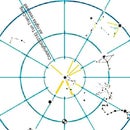Introduction: Beware of Perilous Flips by Magnetic Compasses
by tonytran2015 (Melbourne, Australia)
There has been warning by a Mountaineering expert that many people got into perilous situation when their compasses unexpectedly flipped direction while in storage. The Mountaineering Council of Scotland has issued warning on this danger.
Here I show how to set at will the direction of a compass needle by re-magnetizing it. Also shown are the basic steps in guarding against flipping of magnetic compasses.
Step 1: One Possible Cause of Flips by Magnetic Compasses.
When a magnetic compass is stored its needle can not swing or cannot swing fast enough to follow the change in magnetic field.
If a strong magnetic field is forced through the needle from one end to the other, the needle will be magnetized by this strong field.
Therefore when your compass is stored in your bag and a strong magnet approaches it faster than the needle can rotate to adapt to change, the new field may be able to force a magnetic flux from one end of the needle to the other end and re-magnetize the needle. This occurrence is not rare.
Step 2: Proof and Applications.
The first pictures shows that the needle of the clear based compass is pointing in the opposite direction to that given by the reference, metal cased compass. The needle has been magnetized into the flipped condition.
Step 3: Re-magnetize the Needle Again
The compass needle was then successfully re-magnetized back into normal condition. It again points into normal direction.
So I have been able to re-magnetize (in any direction of choice) the needle of a compass (the clear based compass with a mirror) as shown in the first two pictures. The magnet I used costs me under $0.30USD and is shown in the third, composite picture.
Step 4: Remagnetizing the Needle of Any Compass
1/- To remagnetize a compass, it is preferable to have a single pole P of a strong magnet far away from its other poles. Lay the compass up-side-down. Find out the end A of the needle that is repulsed by P. Push that pole P to the center of the needle, then move P towards that end A. When P has reached the end A and attracted that end, the needle has been re-magnetized.
It is even better if you can supply another single pole Q of opposite polarity to also touch the other end B of the needle. Otherwise, just use the compass just re-magnetized by the single pole P.
2/- The above re-magnetization shows that it is preferable to have long, observable needles for compasses.
3/- If you carry any strong magnets make sure that you use closing irons to close the magnetic lines so that they remain within the vicinity of the magnets.
The magnet I used is a fridge magnet of the rare earth type, it costs under $0.30 USD.
Step 5: Avoidance and Detection of Flipping of a Magnetic Compass
On acquisition:
1/- Inspect your compass for any damage.
2/- Count its swing, roll, and pitching vibration frequencies. Write down a written record.
3/- Check the pitching of the needle and write down a written record.
Before each field travel:
1/- Inspect your compass for any damage.
2/- Compare its swing, roll, and pitching vibrations against your written record.
3/- Check the pitching of the needle and compare against your written record.
4/- Have the polarities of the strong magnets on your phone case marked on a sketch (which magnet attracts which end of the needle). Draw this on paper and carry a copy with the compass.
Before each field use:
1/- Inspect your compass for any damage.
2/- Carefully check the pitching of the needle. If a flip has occurred, the pitching also changes as the North pointing end usually pitches up in Northern hemisphere. If the North end pitches down the needle may have flipped.
3/- Slightly and slowly move the compass towards the phone case to see if the attraction pattern is still the same.
4/- If the vibration patterns are noticeably different you may either have a damaged compass or be in a stronger or weaker than normal (abnormal) magnetic field. You need to think about possible causes and effects.
5/- The above steps only help to detect any unexpected flipping, you still have to carry out all your other procedures for using the compass.
Your compass usage should be more reliable with these extra precautionary steps.











